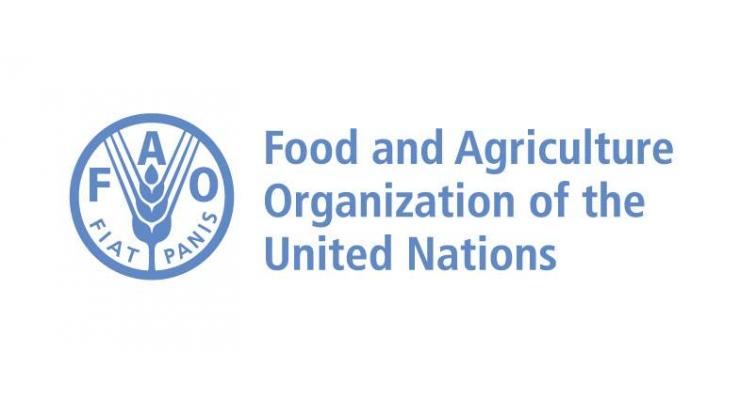
- Home
- World
- News
- Global food prices fall for fifth year in a row, but economic uncertainties remain for 2017: UN
Global Food Prices Fall For Fifth Year In A Row, But Economic Uncertainties Remain For 2017: UN
Sumaira FH Published January 13, 2017 | 08:25 AM

UNITED NATIONS, (APP - UrduPoint / Pakistan Point News - 13th Jan, 2017 ) : Data from 2016 reveals that for the fifth year in a row, the prices of food around the world have declined, in some cases 1.5 percent below 2015 levels, a monthly United Nations report revealed.
According to a press release issued by the United Nations Food and Agriculture Organization (FAO), bumper harvests or harvests that have been remarkably plentiful as well as promising prospects for staple cereals, helped to offset pressure on tropical commodities like sugar and palm oil, whose production was adversely impacted by El Nino.
The FAO's Food Price Index measures the monthly change in international prices for five major food commodity groups: major cereals, vegetable oils, dairy, meat and sugar. The 2016 average was 161.6 points.
Throughout 2016, cereal prices declined steadily down 39 percent from their 2011 peak. Meanwhile, sugar rose by 34.2 percent and vegetable oil prices saw an 11.4 percent increase.
According to Abdolreza Abbassian, an FAO senior economist, "economic uncertainties, including movements in exchange rates, are likely to influence food markets even more so this year".
FAO reported that vegetable oil prices rose by 4.2 percent from November, in part due to low global inventory levels and tight supplies for palm oil and in the case of soy oil, due to the rising use of biodiesels in North and South America.
Higher prices for butter, cheese, and whole milk powder due to restraints in the European Union and Oceania drove dairy prices up by 3.3 percent. Both sugar and meat indexes fell, the former due to a weakening Brazilian Currency and the latter because of lower costs in bovine and poultry meats.
The Index was introduced in 1996 in order to help the public monitor global agricultural commodity markets. It gained prominence as an indicator of potential food security concerns for developing countries following a significant price hikes in 2008.
Related Topics
Recent Stories

SC orders end of encroachments in Karachi

Nazish Jahangir denies viral screenshots, calls them fake

Govt likely to hike electricity price once again

Bismah Maroof announces immediate retirement from international cricket

Malala expresses unwavering support for Gaza people

Selection committee dissolved over Pakistan women cricket team's poor performanc ..

Punjab CM Maryam Nawaz in police uniform at Chung police center

Currency Rate In Pakistan - Dollar, Euro, Pound, Riyal Rates On 25 April 2024

Today Gold Rate in Pakistan 25 April 2024

Mired in crisis, Boeing reports another loss

Session Awarding Ceremony 2024 held at Cadet College Muzaffarabad

Austrian ski great Hirscher to make comeback under Dutch flag
More Stories From World
-
Paris landmark Moulin Rouge's windmill sails collapse
6 minutes ago -
Ahead of feared Rafah invasion, Palestinians mourn bombardment dead
7 minutes ago -
155 killed in Tanzania as heavy rains cause floods, landslides: PM
7 minutes ago -
Car giants vie for EV crown at Beijing's Auto China show
7 minutes ago -
Chinese defense minister to attend SCO meeting in Kazakhstan
17 minutes ago -
China-Bangladesh to hold joint military exercise in May
27 minutes ago
-
Residents protest as Venice launches five-euro entry fee
37 minutes ago -
Portugal marks 50 years of democracy with far right on rise
57 minutes ago -
Pakistan envoy visits TomatoWorld in Netherlands
1 hour ago -
Chinese defense minister to attend SCO meeting in Kazakhstan
1 hour ago -
China, Pakistan should engage in greater counter-terrorism cooperation to combat hostile forces: Khu ..
1 hour ago -
Scottish leader scraps coalition deal with Greens
1 hour ago